| Howard Warp was born in
Minden, but went to Chicago to make his fortune in agricultural plastics: 'Flexo-glass'
and 'Jiffy bags'. He decided that someone should start a collection of the
everyday things that told the story of the development of the American
nation. In 1948 he started collecting buildings and in 1953 opened the
Pioneer Village in his home town, about 20 miles south of Kearney. Today
they have had over five million visitors and are Nebraska's number 1 tourist
attraction. There are 28 buildings on 20 acres and they have over 50,000
items on display from everyday life from 1830 to 1950. | 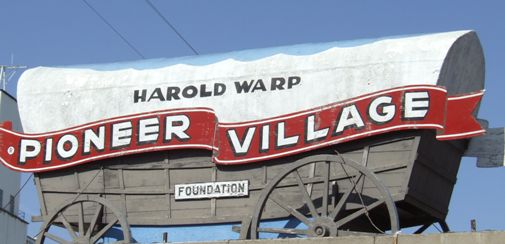 |
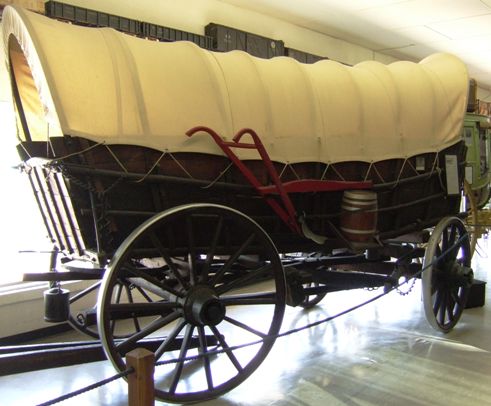 |
At the entrance you start with the covered wagons. This is the 'Conestoga'
which was widely used by pioneers moving westwards. Note the plough on the
side, ready for when you get there. There are also examples of the handcarts
pulled by many families who could not afford the horses or the oxen to pull
a wagon of this size. Oxen were more popular than horses because they were
stronger and of less value to the Indians. |
| This is a freighter's
wagon, often pulled by mules. In the days before the railroad all goods came
west in trains consisting of this type of wagon. | 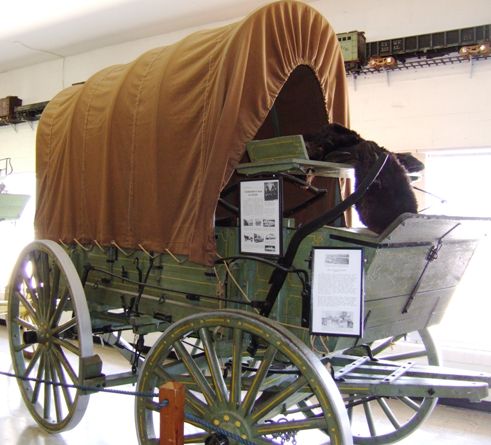 |
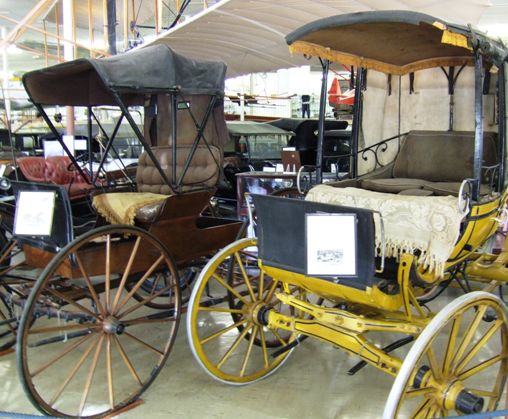 |
Beyond the wagons you find just about every type of carriage, buggy, surrey,
buckboard and carriage that the wealthier would have used. |
| Then it is on to the
horseless carriages. This is a 1902 Cadillac with a one cylinder 7hp engine.
It was designed by Henry Ford, but he was dissatisfied with its performance
and moved on to produce an almost identical machine but with a 2 cylinder
8hp engine. It became the world's oldest production car. The Ford cost $850,
the same as the Cadillac, and 1708 were built in 1903. By 1923 Ford was
building 2 million cars a year. The Cadillac went out of production in 1909. | 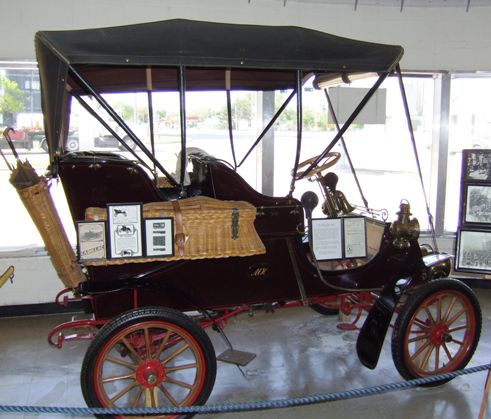 |
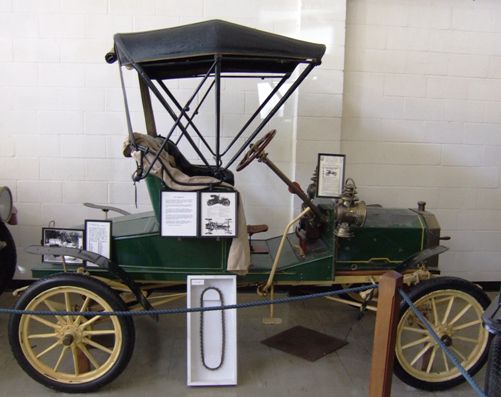 |
The model N Ford was first built in 1906 with a 15hp four cylinder engine
with a chain final drive. |
| This is a 1905 Reo made
by R E Olds (he used his initials for the name). It had the same type of
clutch as the Ford but nobody is sure whether Ford or Olds was the inventor.
It did 57 miles to the gallon. In the same year the Nebraska legislature
passed a law requiring any driver to stop whilst horses passed him in case
they were frightened. | 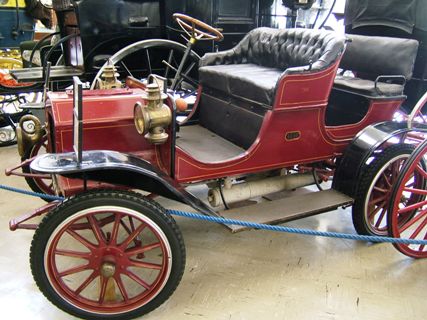 |
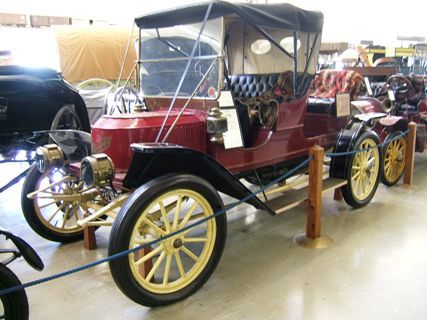 |
The famous Stanley Steamer won a race in 1898 at an average speed of 27.4
mph. 100 of the 5000 spectators ordered one on the spot. |
| This is a 1931 L-29 Cord
featuring front wheel drive. It had an 8 cylinder engine and cost around
$3000. In styling it was about 10 years ahead of its time. | 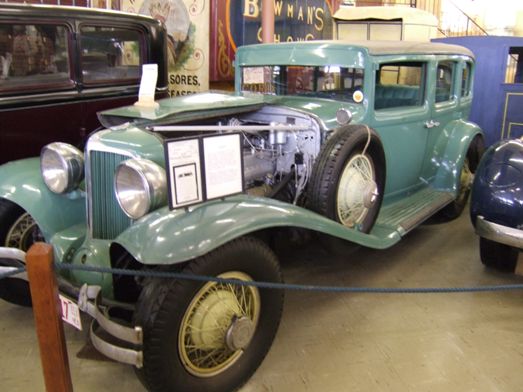 |
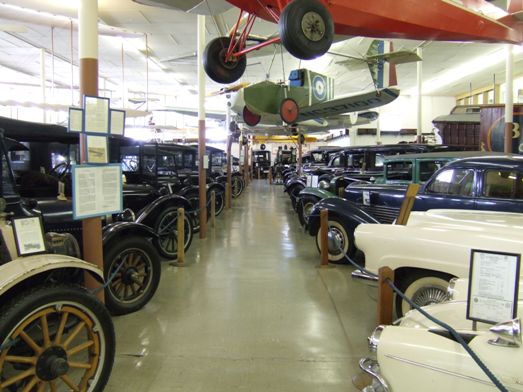 |
This is just the first building with the buggies, carriages, cars and
trucks, and early aeroplanes suspended from the ceiling. There are over 300
more cars to come after this! |
| We realised if we read
all the notices and photographed all the vehicles we would be there all week
instead of just all day. This is a Mecca for any American car enthusiast. | 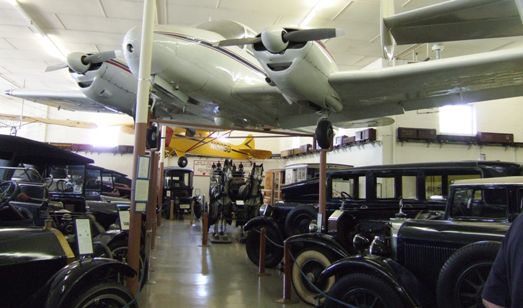 |
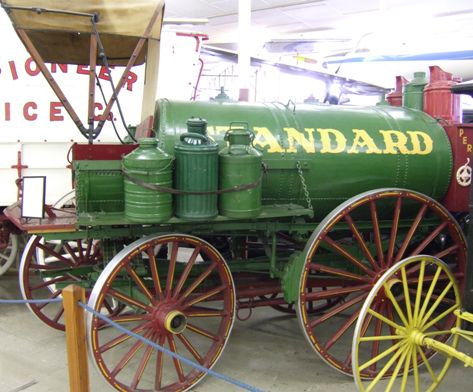 |
After several rows of cars we came to a row of delivery vehicles and trucks.
These were slower to develop. The Standard oil tanker is interesting for a
notice which says that gasoline is 2cents/gallon. It was originally a waste
product from the heating and lighting oils on sale at the time. |
| Along one wall is a
collection of telephones. I'm always interested in such things. This is less
than a quarter of the total. | 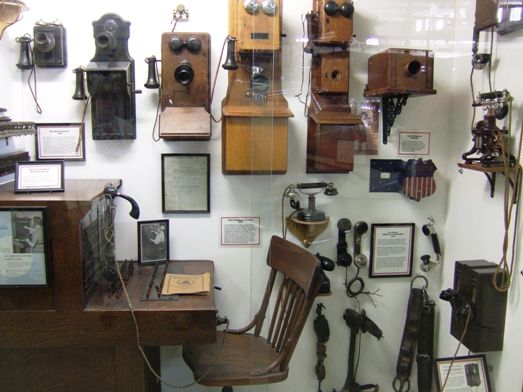 |
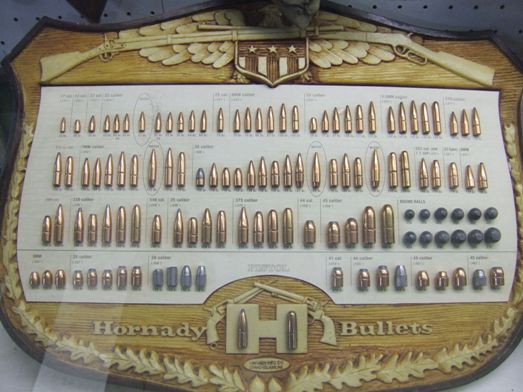 |
Another odd collection were these bullets from tiny .17 calibre to .45 this
display was in a case of guns which we will see later. |
| So to the buildings
outside, which Howard Warp bought and had moved here. This log cabin was the
first in Webster county and was part of Elm Creek Fort with a stockade. It
was built in 1869 and would have been quite rare out here where trees were
scarce and most homes were made of earth sods. | 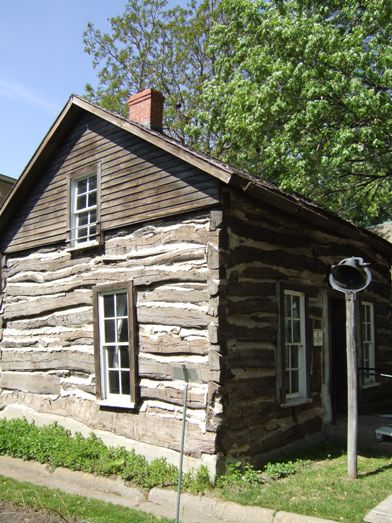 |
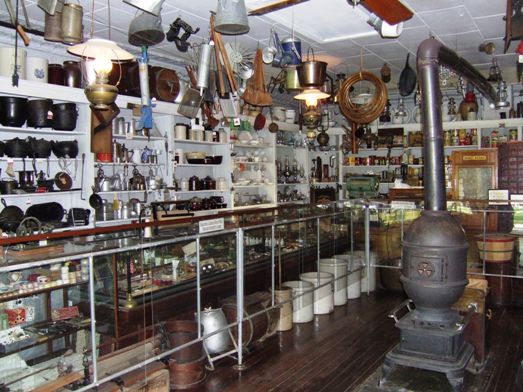 |
There is a well stocked hardware store where you could once have bought
almost anything. The huge variety of items on display certainly makes you
believe that. |
| There is a steam train
and this smaller narrow gauge loco probably used on a branch line. Could be
one of Thomas's cousins. | 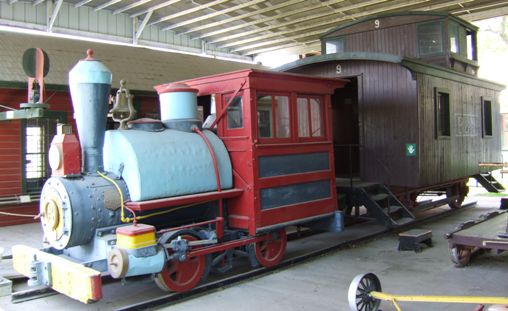 |
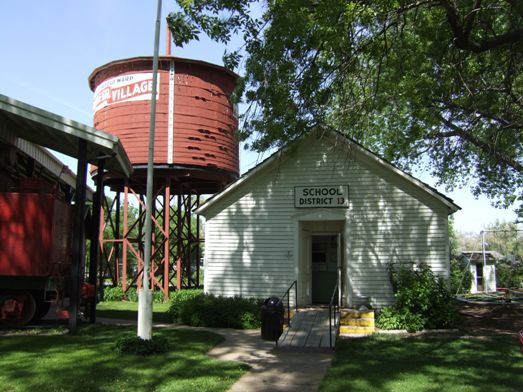 |
Every town out here had its water tower to supply the trains. In fact the
water tower often came first and the town second. The station is over to the
left and here we have the one room schoolhouse in the centre. This is
actually the schoolhouse where Howard Warp started his education, and it was
the first building in the collection. It still has original school books and
attendance certificates on display. |
| Next door is a typical
sod house with walls 2 ft thick which made it warm in winter and cool in
summer. In order to own up to 80 acres of land a homesteader had to farm it
for five years and construct a house upon it. This was the typical
homesteader's house. There are pictures of Harold Warp's parents inside. His
parents both came from Norway, as did many of the settlers in this area. | 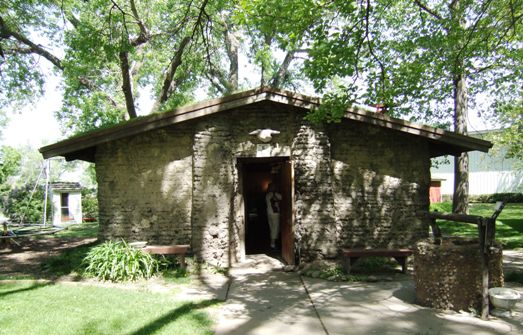 |
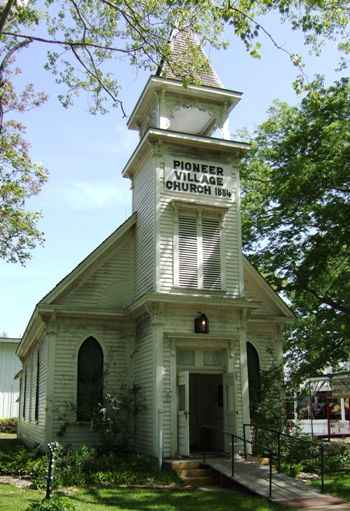 |
This is one of two churches in the collection. It was originally in Minden
and was built in 1884. Services are still held here on Sundays in the
season. |
| Inside it looks very much
as you expect a church to look, but it does have his mother Helga's
christening cap on display. | 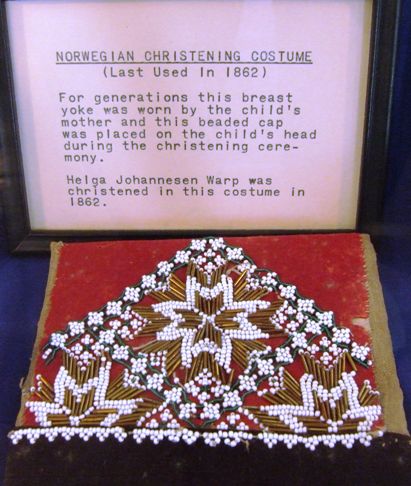 |
|